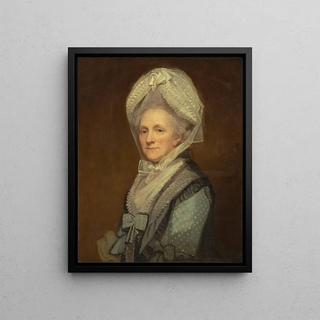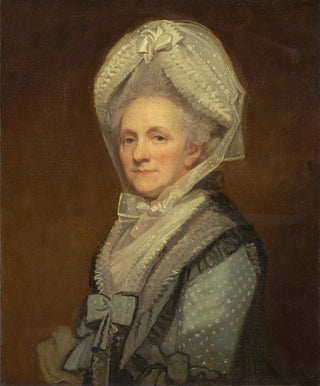Art print | Mme Thomas Phipps - George Romney


View from behind

Frame (optional)
In the fascinating world of art, some works transcend mere frames to become witnesses of their era. The art print of Mme Thomas Phipps by George Romney is one of those creations that capture not only the beauty of a face but also the essence of a society in transition. This piece, created at the end of the 18th century, evokes timeless elegance while offering a glimpse into the norms and values of a time when portraiture was a means of social assertion. Through Mme Phipps's gaze, the viewer is invited to explore the subtleties of fashion, customs, and aspirations of the British aristocracy.
Style and uniqueness of the work
The art print of Mme Thomas Phipps is a shining example of the neoclassical style, where the finesse of details and the richness of colors harmoniously blend. Romney, a true virtuoso, manages to capture not only the physical features of his model but also her character and spirit. The delicate pose of Mme Phipps, her gaze both gentle and penetrating, as well as the flowing drapery of her dress, demonstrate impressive technical mastery. The subtle use of light and shadow gives the piece a depth that transcends the two-dimensional plane, making the portrait come alive. Every brushstroke seems to tell a story, and one cannot help but imagine the thoughts and dreams of this woman at the heart of high society.
The artist and his influence
George Romney, born in 1734, is one of the most prominent portraitists of his time. His work is distinguished by a particular sensitivity to the psychology of his subjects. Indeed, beyond mere representation, Romney seeks to establish an emotional connection between the viewer and the model, an approach that places him at the forefront of his era. His influence extends well beyond his own work, inspiring many contemporary and future artists. At a time when art must reflect the values and aspirations of society, Romney manages to combine technique and emotion, making each portrait an intimate exploration of the human condition. His ability to immortalize iconic figures while remaining faithful to their essence makes him

Matte finish

View from behind

Frame (optional)
In the fascinating world of art, some works transcend mere frames to become witnesses of their era. The art print of Mme Thomas Phipps by George Romney is one of those creations that capture not only the beauty of a face but also the essence of a society in transition. This piece, created at the end of the 18th century, evokes timeless elegance while offering a glimpse into the norms and values of a time when portraiture was a means of social assertion. Through Mme Phipps's gaze, the viewer is invited to explore the subtleties of fashion, customs, and aspirations of the British aristocracy.
Style and uniqueness of the work
The art print of Mme Thomas Phipps is a shining example of the neoclassical style, where the finesse of details and the richness of colors harmoniously blend. Romney, a true virtuoso, manages to capture not only the physical features of his model but also her character and spirit. The delicate pose of Mme Phipps, her gaze both gentle and penetrating, as well as the flowing drapery of her dress, demonstrate impressive technical mastery. The subtle use of light and shadow gives the piece a depth that transcends the two-dimensional plane, making the portrait come alive. Every brushstroke seems to tell a story, and one cannot help but imagine the thoughts and dreams of this woman at the heart of high society.
The artist and his influence
George Romney, born in 1734, is one of the most prominent portraitists of his time. His work is distinguished by a particular sensitivity to the psychology of his subjects. Indeed, beyond mere representation, Romney seeks to establish an emotional connection between the viewer and the model, an approach that places him at the forefront of his era. His influence extends well beyond his own work, inspiring many contemporary and future artists. At a time when art must reflect the values and aspirations of society, Romney manages to combine technique and emotion, making each portrait an intimate exploration of the human condition. His ability to immortalize iconic figures while remaining faithful to their essence makes him






